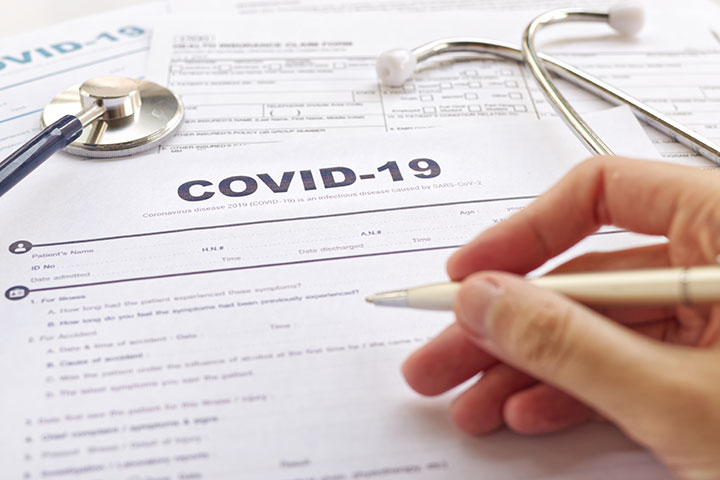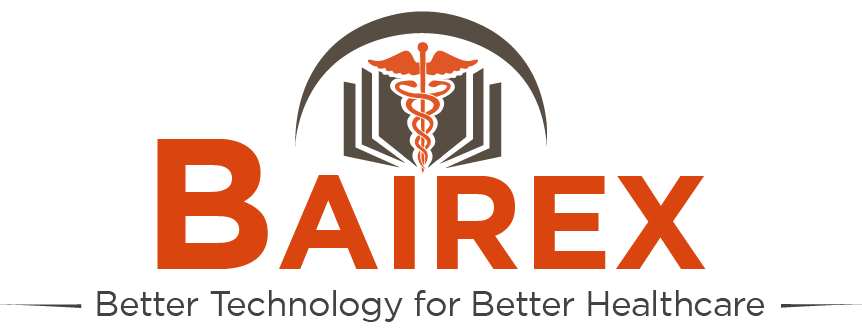Latest on COVID-19
- Home
- Latest on COVID-19
Guillain-Barre Linked to COVID-19 in Italy | MedPage Today

Guillain-Barré syndrome (GBS) associated with COVID-19 was seen in five patients in Italy during the first 3 weeks of March.
Three Italian hospitals collectively reported the cases out of an estimated 1,000 to 1,200 patients with COVID-19, wrote Sabrina Ravaglia, MD, PhD, of the IRCCS C. Mondino Foundation in Pavia, Italy, and co-authors, in a letter to the New England Journal of Medicine.
"We observed five patients who developed Guillain-Barré syndrome following COVID-19 infection; this number, in such a brief time period and in a total number of about 1,000 COVID-19 patients, represents a strong association," Ravaglia said.
Blurring of hand holding pen and Stethoscope on health form
Guillain-Barré syndrome (GBS) associated with COVID-19 was seen in five patients in Italy during the first 3 weeks of March.
Three Italian hospitals collectively reported the cases out of an estimated 1,000 to 1,200 patients with COVID-19, wrote Sabrina Ravaglia, MD, PhD, of the IRCCS C. Mondino Foundation in Pavia, Italy, and co-authors, in a letter to the New England Journal of Medicine.
"We observed five patients who developed Guillain-Barré syndrome following COVID-19 infection; this number, in such a brief time period and in a total number of about 1,000 COVID-19 patients, represents a strong association," Ravaglia said.
"This confirms that COVID-19 is associated with neurological complications," she told MedPage Today. "In our series, the neurological complication occurred through a post-infectious, likely immune-mediated, mechanism: COVID-19 symptoms preceded the neurological syndrome, and we failed to find viral RNA in the cerebrospinal fluid of these patients."
By itself, GBS may be associated with respiratory failure due to respiratory muscle weakness and may complicate the outcome of COVID-19 patients, Ravaglia added. "GBS complicating COVID-19 should be suspected when there is, for instance, a discrepancy between chest x-ray findings and respiratory function," she said. "We have also to consider that, in the context of an intensive care unit or in patients receiving ventilator support, the motor signs and symptoms of GBS may be difficult to recognize."
GBS is an acquired demyelinating polyneuropathy with an axonal variant, often beginning in the lower extremities and ascending over time, with loss of reflexes. Some cases start a few days or weeks after respiratory or gastrointestinal viral infection. Treatment often is intravenous immunoglobulin (IVIG) or plasmapheresis. Diagnosis may include electromyography and nerve conduction studies; CSF may contain elevated protein but minimal or no cells.
In the Italian cases, GBS symptoms began 5-10 days after the first COVID-19 symptoms. Four patients had onset with lower-limb weakness and paresthesias; one had facial diplegia, then ataxia and paresthesia. Four of the five developed generalized flaccid tetraplegia, and three patients required mechanical ventilation.
CSF showed minimal white cells in all patients, and three patients had elevated protein. All CSF samples were negative for the virus. Anti-ganglioside antibodies (GM1, GQ1b, and GD1b) were negative in the three patients who were tested. Electrophysiologic studies were consistent with an axonal variant of GBS in three patients and two patients had a demyelinating pattern.
MRI with contrast showed two patients with enhancement of caudal nerve roots and one with facial nerve enhancement.
Treatment started with IVIG in all patients. Two patients received a repeat course of IVIG and another received plasma exchange. After 4 weeks, two patients continued on mechanical ventilation in the ICU, two were in physical therapy with flaccid paraplegia with minimal upper limb movement, and one was able to walk independently.
The interval of 5 to 10 days between the onset of viral illness and first GBS symptoms is similar to that seen in other infections, Ravaglia and colleagues observed. "Although many infectious agents have been associated with Guillain-Barré syndrome, there may be a propensity for preceding infection with Campylobacter jejuni, Epstein-Barr virus, cytomegalovirus, and Zika virus," they noted.
Previous reports have linked GBS and coronavirus infections. In China, researchers reported a single case of COVID-19 presenting with acute GBS in Lancet Neurology, but this patient was not tested for COVID-19 when admitted and her fever and respiratory symptoms developed 7 days after the onset of her GBS symptoms.
"On the basis of this observational series involving five patients, it is not possible to determine whether severe deficits and axonal involvement are typical features of COVID-19-associated GBS," Ravaglia and co-authors wrote.
"GBS with COVID-19 should be distinguished from critical illness neuropathy and myopathy, which tend to appear later in the course of critical illness than GBS," they added.
Read more: https://www.medpagetoday.com/infectiousdisease/covid19/86029

